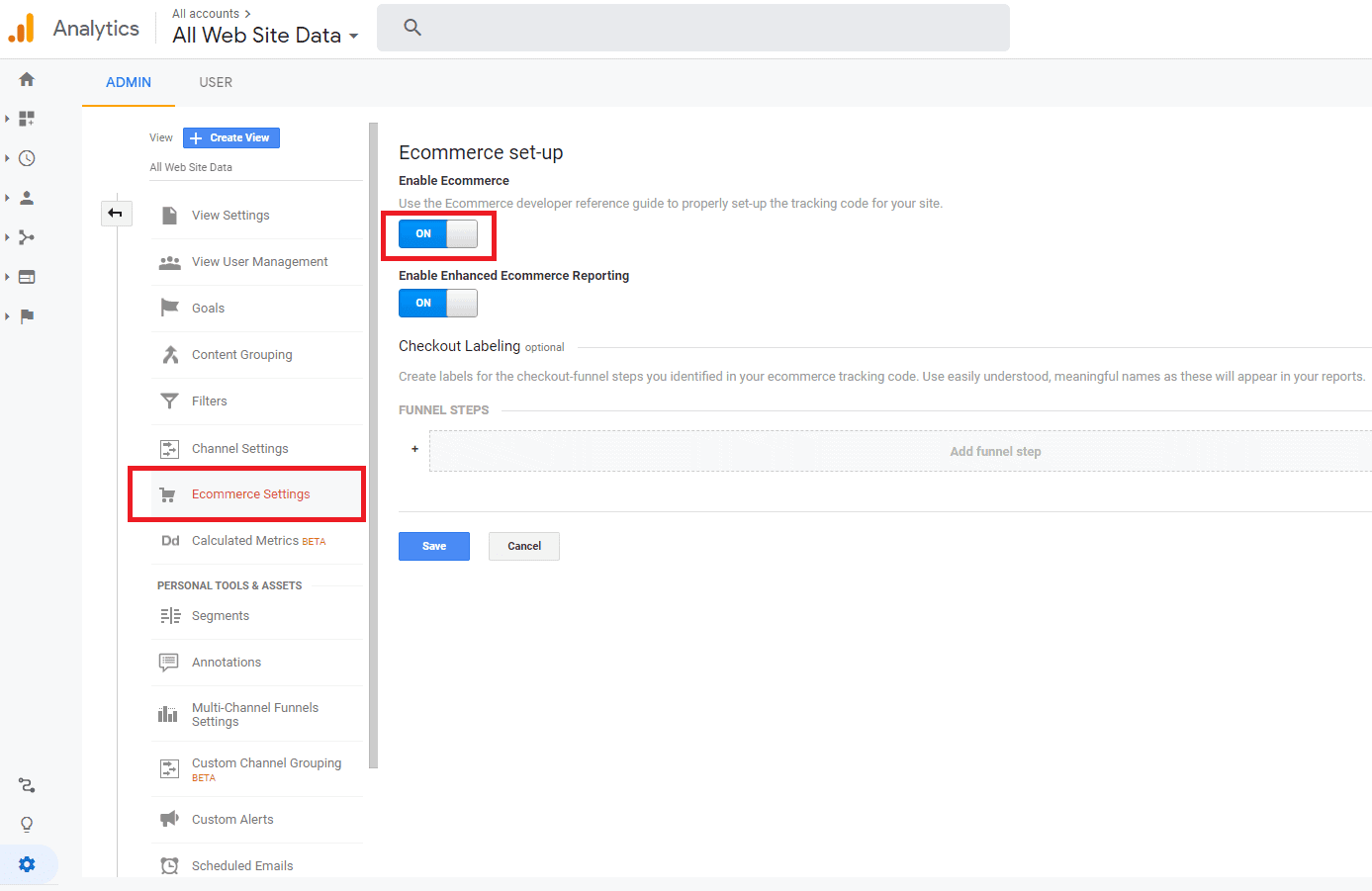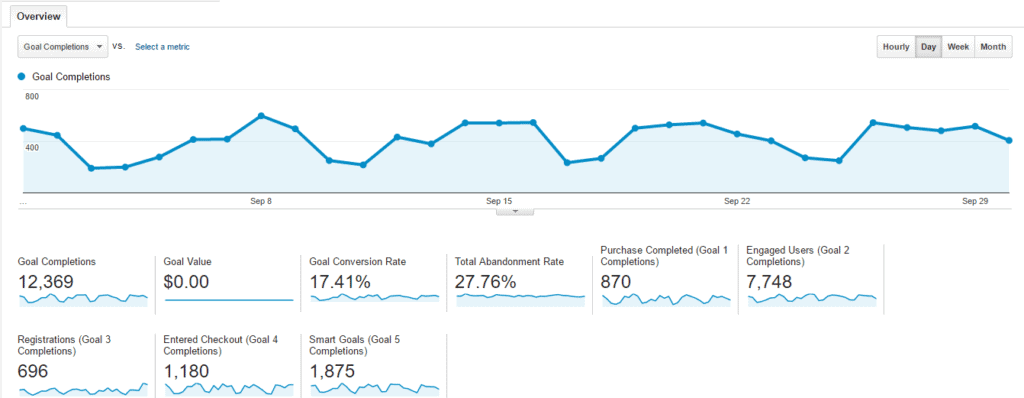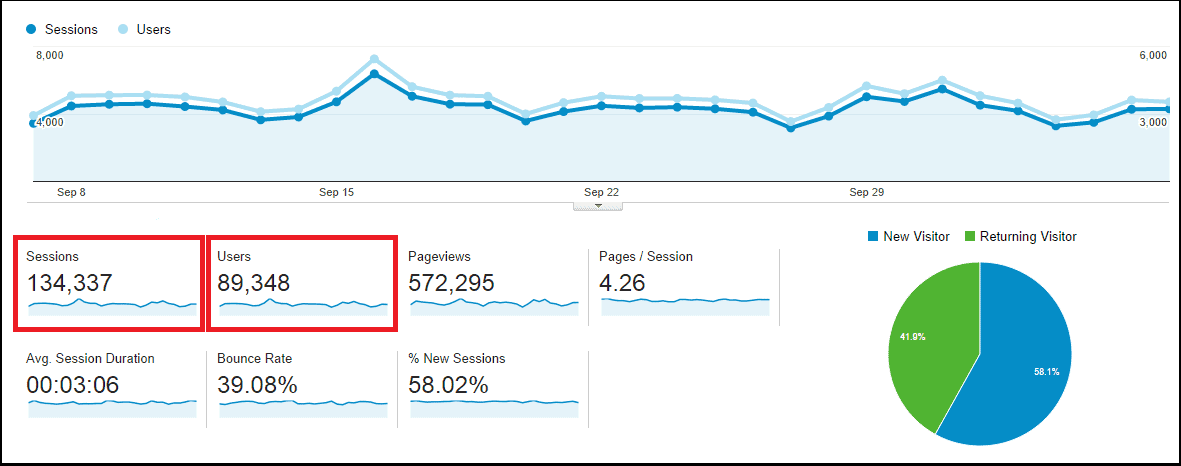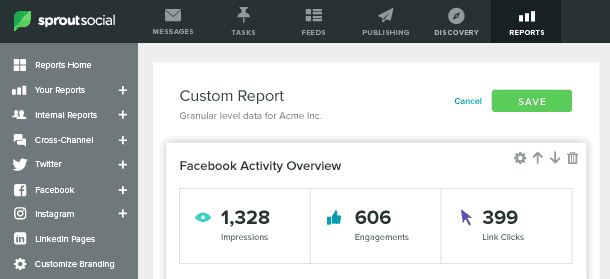A key performance indicator (KPI) is a special type of metric that serves as a proxy measurement for the performance of your business against a specified objective.
Digital marketing KPIs help marketers understand the most important metrics that can be used to measure the success of their marketing campaigns and stay focused on meeting those objectives by focusing on the right activities at the right time.
One of the key benefits of digital marketing, when compared to traditional marketing mediums, is the ability to measure and track marketing spending and outcomes with precision and accuracy. Marketers who use digital marketing KPIs get the most benefit from their marketing data and can better plan their activities to maximize impact on campaign outcomes.
To help you start implementing KPIs for your own business, we’ve created this list of the top 9 digital marketing KPIs that you should pay attention to in 2020.
[optin-inline id=’sefz7fnf9gutmokvjsuv’]
Top 9 Digital Marketing KPIs You Should Pay Attention To
Our top 9 digital marketing KPIs include metrics from all types of online marketing, including pay-per-click (PPC) advertising, organic search marketing, email marketing, eCommerce, and social media marketing.
For each KPI, we’ll include a basic definition and overview, when to use it, and the best way to keep track.
Conversions
Overview: Conversions are the most important digital marketing KPI for measuring campaign success. A conversion is counted whenever someone engaging with your marketing campaign completes a desired goal, such as purchasing a product or service from your business, registering for an upcoming webinar, or filling out a lead generation form.
Conversions are a crucial KPI because they relate directly to the final outcome of your marketing campaign. The goal of a campaign is to convert the target audience into business leads or paying customers. Measuring conversions is ultimately how you will determine whether your campaign was a success.
When to Use: Conversions are relevant to virtually all types of online marketing. In eCommerce, a conversion is usually counted when a visitor to your website completes a purchase. You could also send an offer to your mailing list as part of an email marketing campaign – here, a conversion would be counted whenever someone responded to your email and accepted the offer. Conversions are also an important KPI in PPC advertising, where marketers must convert paid traffic into paying customers with targeted offers and effective landing pages to make a profit.
How to Measure: Digital marketers can use goals or conversion tracking on Google Analytics to define, monitor, and tabulate conversion events on their websites.
Revenue
Overview: The total revenue for your digital marketing campaign is simply the total value of all sales of goods and services that were generated by the campaign.
When to Use: If the goal of your digital marketing campaign is to sell a product or a service, total revenue can serve as a key performance indicator of campaign success. The ultimate goal of any business is to make a profit. To determine whether your marketing campaign is helping you make a profit, you will need to keep track of campaign costs and how much revenue your campaign is generating. You may also wish to measure the total revenue that you generate through all digital channels and divide it by the total cost of all digital marketing efforts to evaluate the profitability of a multi-channel marketing approach.
How to Measure: Digital marketers can monitor their eCommerce website revenue by enabling the “E-Commerce set-up” feature in Google Analytics.

Image: Enabling eCommerce in Google Analytics
Cost per Acquisition (CPA)
Overview: Cost per acquisition is a digital marketing KPI that is measured at the campaign level or for a specific marketing channel. It reflects the average cost of acquiring a single paying customer through the specified channel.
Cost per acquisition is a crucial element of measuring campaign profitability, especially for companies that sell subscription-based products where customers make recurring payments over time. For such organizations, measuring cost per acquisition against customer lifetime value is important for calculating campaign return on investment (ROI) and profitability.
When to Use: Cost per acquisition is used in social media marketing, pay-per-click advertising, organic search, eCommerce, and several other types of digital marketing.
How to Measure: Businesses can evaluate their cost per acquisition by calculating the total cost of a campaign and dividing it by the total number of conversions.
Conversion Rate
Overview: While conversions measure the total number of prospective customers or audience members who became paying customers, a conversion rate measures the percentage of individuals exposed to a particular offer who chose to accept the offer.
Conversion rates are important because they have a massive impact on campaign success. A website with a 2% conversion rate can earn twice as much revenue as one with a 1% conversion rate, even with the exact same amount of traffic and the same quality of leads.
When to Use: Just like conversions, the conversion rate metric or KPI is important for all types of digital marketing.
How to Measure: Once you have configured goals on your website using Google Analytics, it’s easy to calculate your conversion rate by dividing total conversions by the total number of leads or total visitors.
If your website is inefficient at converting traffic or leads into paying customers, you will struggle to build any kind of profitable digital marketing campaign – that’s why it’s important to measure conversion rates by page and by source so you can identify the best opportunities to optimize and improve your results.

Image: Goal Completion tabulated on Google Analytics
Cost per Opportunity
Overview: Organizations that sell business-to-business may differentiate between leads, prospects, and opportunities as part of a combined sales/marketing funnel. An opportunity may be defined as a lead that has been qualified by both the marketing team and the sales team and is considered to have an excellent chance of becoming a customer in the future.
When to Use: An organization that measures cost per opportunity can use this data to identify under-performing steps in the sales-marketing funnel and introduce process changes or optimizations to improve results.
How to Measure: The first step to measuring cost per opportunity is to establish a clear definition of opportunities that differentiates them from leads or prospects in the sales-marketing funnel. A customer relationship management (CRM) software tool can be useful for keeping track of how many opportunities are generated from specified channels. Cost per opportunity can be measured by dividing the total cost of marketing by the total number of opportunities generated.
Unique Visitors
Overview: Unique visitors is a metric that counts the number of distinct individuals who visited your website or a particular page on your website during a specified time period.
When to Use: For content marketing and organic search campaigns, key objectives often include enhancing brand awareness and increasing relevant website traffic to drive downstream conversions and goal completions. By measuring how many unique website visitors are generated by a campaign, marketers can quantify the impact of their marketing efforts on both brand awareness and downstream conversions or sales.
How to Measure: Digital marketers can use Google Analytics on their websites to monitor all website traffic data, including unique vs. returning visitors, and visitors by source or landing page.

Image: On Google Analytics, “Sessions” refers to the total number of browser sessions on your website while the “Users” metric quantifies the number of unique visitors on your site.
Bounce Rate
Overview: The bounce rate for your website is defined as the percentage of users who land on your website and navigate away without ever interacting and having viewed only one page.
When to Use: A digital marketing campaign that uses bounce rate as a key performance indicator might be focused on improving website usability, user experience, and user engagement on their website by adding internal links, creating new content, revamping old content, or introducing technical fixes that improve page speed and functionality. Search engines like Google prefer to send organic traffic to websites with a low bounce rate.
How to Measure: Digital marketers can easily measure bounce rate on their websites after having installed Google Analytics.
Click-Through Rate (CTR)
Overview: In digital marketing, the CTR metric describes how frequently an email, organic search result, or paid advertisement impression results in a “click-through” to the target landing page.
When to Use: CTR is used as a key performance indicator whenever an audience member is expected to engage with an advertisement, email, or search result to advance to the next stage in the customer journey.
How to Measure: Email marketing applications like MailChimp are useful for monitoring email marketing metrics like CTR. Marketers can use Google Ads to measure their CTR from paid advertisements and the Google Search Console to access organic CTR data.
Social Engagement
Overview: Social engagement metrics include things like follows, likes/reactions, comments, and shares across major social media platforms (Facebook, Twitter, Instagram, LinkedIn, and Snapchat).

Image: Social engagement KPIs measured and tracked using Sprout Social.
When to Use: Social engagement is a measure of your organization’s reach on social media and the impact of your social media marketing efforts on brand awareness and affinity in the markets you serve.
How to Measure: Brand monitoring or online reputation management software tool can help you keep track of mentions of your company, brand, or products that appear on social media. Major social platforms already have built-in analytics tools for measuring social engagement metrics on your business pages.
Summary
Thanks for checking out our list of the 9 most important digital marketing metrics that you should pay attention to.
At Directive, we like to choose a specific digital marketing KPI that will act as the guiding light for each marketing campaign we undertake. This helps us focus our efforts in the areas where they will have the largest impact on campaign and business objectives.
We hope this list helps you choose the best digital marketing KPIs to narrow your focus and maximize results from your next online marketing campaign.
-
 CEO
Garrett Mehrguth
CEO
Garrett Mehrguth
Did you enjoy this article?
Share it with someone!
